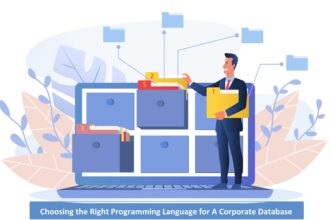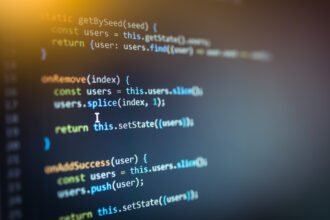Data scientists need to have a number of different skills. In addition to understanding the logistics of networking and a detailed knowledge of statistics, they must possess solid programming skills.
When you are developing big data applications, you need to know how to create code effectively. You will need to start by learning the right programming languages. There are a lot of important practices that you need to follow if you want to make sure that your program can properly carry out data analytics or data mining tasks.
Common Programming Mistakes Data Developers Must Avoid
By now, you probably know that coding involves extensive work. It will be even more intensive when you are creating big data applications, because they tend to require a lot more code and greater complexity.
Sadly, complex applications are more likely to have bugs that have to be resolved. You will have to find ways to effectively debug issues when creating software. To make coding more straightforward and effective, you must start by learning the best practices. This entails being aware of some of the biggest mistakes that can cause your code to fail.
This article outlines some common coding errors that programmers creating big data programs need to avoid.
Failing to Back Up Code
One of the most common programming errors is failing to create a backup for your work. Building code is hard work, and you don’t want to risk losing all your information because of a system failure or power outage. Therefore, you will need to spend some time backing up your code as you continue with work.
The purpose of creating backups for your work is that if you lose or damage a file or if problems happen, your backups will survive, and you continue to work uninterrupted. This is more important than ever, since many developers are increasingly dealing with ransomware attacks, so backing up your essential work is critical. Applications that handle data mining and data analytics tasks are even more likely to be targeted by hackers, because they often have access to very valuable data.
You should consider getting professional programming homework help online if you lose your data.
Bad Naming of Variables
One of the most serious errors in programming is using bad names for your variables. The variable name should represent the kind of information contained in the variable. Of course, they are referred to as variables because the data contained within them can change. However, the core operations of the variables remain the same.
Some budding programmers make the mistake of using names that are either too short or cannot communicate their use in the code. When naming them, you may assume that you understand their use. However, if you return to your code after a few months, you may not recall what the variables were for. Using a lousy name also makes sharing your work or collaborating with larger team members cumbersome.
If you’re just beginning your programming journey and want to avoid such pitfalls, learning how to start coding correctly from the get-go can be incredibly valuable. This process not only encompasses understanding the syntax of a particular language but also includes essential practices like proper variable naming. By mastering these foundational elements, you can write clear, comprehensible code that’s easy for both you and others to revisit and collaborate on.
Another mistake that many programmers developing data science applications make is that they don’t provide important information about the function served by the variable. Unfortunately, they may also include this information in a difficult way to read and understand. The best variable names are neither too long nor too short. Anyone going through your code should understand what your variables represent.
The name should designate the data that your variable represents. Also, your code will probably be read more times than written. So instead of taking the most straightforward approach to writing code, you should focus on how easy it will be for other people to read it.
Most experts recommend using simple and concise code names. The name should be written in English but shouldn’t comprise special characters.
Improper Use of Comments
Data science applications are very complex. Therefore, they are more likely to have cumbersome code that can be difficult to follow. Therefore, it is imperative that developers creating big data applications use plenty of comments to understand the code and make sure other programmers can pick up on it as well.
Comments are excellent reminders of the function performed by a piece of code. In programming, a comment implies an annotation or explanation in the source code intended to make the code easier to comprehend. Unfortunately, compilers and interpreters generally ignore comments, but they serve an essential function.
All programs should contain comments that make it easy to describe the purpose of the code. Users need to be able to use a previously created program as easily as possible. However, there are limitations on the number of comments you can have in your code.
Having too many comments means you will have difficulty changing the comments every time you alter the variables. Only use comments in situations where the code is not self-explanatory. If you use the correct naming convention, your work should have very few comments.
Repetitive Code
Another frequent programming error is repetition. One of the core philosophies of effective programming is to not repeat yourself. You may need to revise your work multiple times to ensure that you have not repeated code. As a rule, copy and pasted code are likely repeated. You want to practice using functions and loops as you generate code.
This can be a very costly problem when you are creating a program that has to process lots of data. Your program can crash if there are lots of repetitive issues.
To avoid repetition, do not reuse code by copying and pasting some existing fragments. It is much safer to put the code in a method. This way, you can always call it if it is required the second time.
Being Inconsistent with Code Formatting
When creating new code for a data science application, consistency implies settling for a style and sticking with it throughout. The first level of consistency is the individual degree. This essential consistency means doing what you prefer and staying true to it.
On the other hand, collective consistency means doing your work in a way that can be easily understood by others when working in teams. If other developers are to go through your code, they should be able to understand the work wherever you touch code, respect and remain consistent with the style.
This article summarizes a few mistakes to avoid when programming or coding. For example, stay away from functions that are too big and name your code appropriately. Research more on how to avoid coding errors online.











